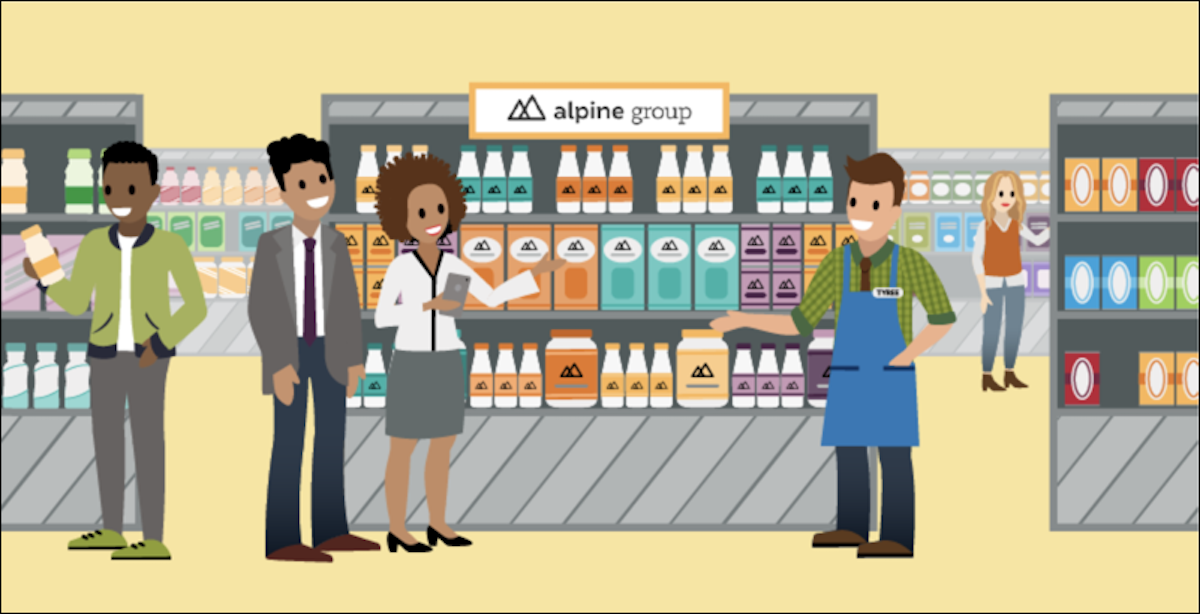Get to Know the Consumer Goods Cloud Base Data Model
Learning Objectives
After completing this unit, you’ll be able to:
- Describe the nature of the consumer goods industry.
- List key considerations for reviewing the consumer goods base data model.
Introduction
The world of consumer goods is fast-paced and intricate. As a consumer goods company, you need to track your retail channel partners, the products you sell at those stores, and the activities your field reps perform in those stores. The activities range from basic auditing and merchandising, to promotional sales, order capture, and delivery of products. At the same time, you must stay on top of key metrics related to product availability, store compliance, and customer satisfaction.
This module is about the Consumer Goods Cloud base data model. In this module, you learn how the base data model in Salesforce Consumer Goods Cloud can help you track the key information related to your business and the activities of important users like your sales managers and field reps. For information on the enhanced data model, see Basic and Enhanced Data Models.
The Salesforce consumer goods data model gives you objects and fields to support retail execution and lets you define the relationships between different sets of data. It’s not a “one-size-fits-all” data model. Instead, it’s flexible and helps you manage planning and execution at retail stores based on your business requirements.
We know that, at a glance, the consumer goods data model can look a bit overwhelming. So let’s follow along as one company works with it to optimize its retail execution.
Meet the Alpine Group
Alpine Group Nutrition & Beverages is a consumer goods company that manufactures food products, beverages, and apparel for health-conscious consumers. Two key roles at Alpine Group drive the business: account managers in charge of large retail chains, and regional sales managers in charge of field reps who execute store visits.

Gustavo DeLuca is a sales manager at Alpine Group. He and his team of field reps manage retail execution for Alpine Group’s biggest retail account, Northern Trail Outfitters (NTO).
NTO has a chain of retail stores in various countries and also an online portal to sell products. NTO brick-and-mortar stores come in different shapes and sizes.
- Large supermarkets that sell products from various consumer goods companies
- Specialized stores showcasing nutritional foods and beverages with a devoted fitness-conscious customer base
- Small stores that sell a limited range of specialized items from the Alpine Group product catalog
Alpine Group sells to all NTO store profiles, and Gustavo is responsible for retail planning and execution at all of them. He assigns field rep visits to the NTO stores, where the reps execute all presales and merchandising activities. While at large stores, field reps focus on audits and merchandising. At smaller stores, they also take orders and deliver products.
Considerations for Object and Data Organization
Dorothea Akeno is the business architect for Alpine Group. She has been tasked with setting up the consumer goods data model and reviewing effective relationships between objects to optimize the performance of the company. She wants to help sales managers like Gustavo manage the store hierarchy and product classifications and execute successful store visits.

Dorothea can keep retail execution flexible by choosing the object associations that work best for Alpine Group. It’s important to keep in mind that not all associations are required for all scenarios. It depends on the scale of business, the operations you want to perform, and the kind of stores you are targeting.
Here are a few points that she considers before working with the data model.
- The NTO stores are located in different time zones, have different business hours, and belong to different markets, emerging and stable. She must find a way to make the data model work for all stores.
- Selling products by type or category isn’t useful for a large company like Alpine Group. It needs to get the right individual products to the right stores.
- Many stores have a similar layout. The type of products displayed on the shelves is uniform across these similar stores. She must make this association work.
- A large part of Alpine Group’s effort is spent on promoting and upselling new products to stores. The challenge is to track how the promotional activities are carried out in each store.
- She needs to identify the broad task types that reps perform at retail stores and set up metrics to measure store performance.
- Alpine Group has different sets of reps who carry out pre-sales and merchandising activities at retail stores. They repeat a specific set of activities for many visits, so Dorothea must find a way to reuse the task list.
- At Alpine Group, a sales manager manages a team of 10 field reps on average, and a field rep completes around eight visits per day. So Dorothea must be conscious of how to keep the visit planning effort to a minimum.
Realizing she has a significant task at hand, Dorothea now starts her journey with the data model. She hopes she can organize the clusters of data so that they work cohesively. She has no doubt that with Salesforce Consumer Goods, she can help Alpine Group and teams like Gustavo’s achieve maximum efficiency.
Resources
- Salesforce Video: Consumer Goods Sizzle Reel
- Salesforce External Website: Consumer Goods CRM
- Trailhead Module: Retail Execution in Consumer Goods Cloud